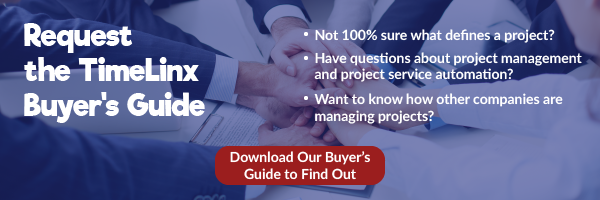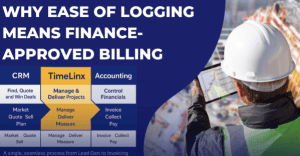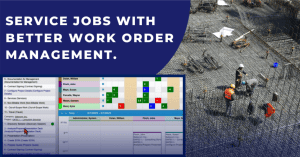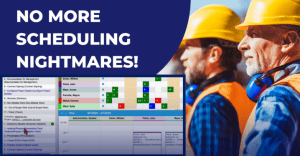As organizations increasingly adopt browser-based applications—whether hosted on local servers or with providers like Amazon—some applications remain on-premises while others are in the cloud. Evaluating CRM to ERP to PSM integration helps you determine the right approach, especially when you need scalable project management capabilities as your business grows and customer interactions increase.
For instance, you might use a hosted CRM (Customer Relationship Management) system, while your accounting or ERP (Enterprise Resource Planning) software remains securely on-premises. Modern CRM solutions now make it easy to synchronize real-time customer data with back-end systems, eliminating redundant data entry, ensuring accurate funds management, and maintaining smooth business operations.
For this article, “accounting” and “ERP” are used interchangeably, though ERP includes more than accounting. ERP also covers supply chain, inventory and service management projects, making the right management tool a single source of truth for your organization.
Easiest CRM to Use

Choosing the right CRM can be challenging, but Infor CRM and Sage CRM from TimeLinx are widely regarded as user-friendly options. These systems prioritize ease of use, offering intuitive interfaces and robust features for managing customer relationships, whether for small projects or large-scale strategies.
Infor CRM delivers a comprehensive suite of tools for sales, marketing and customer service, enabling teams to manage interactions efficiently and enhance customer satisfaction. Its integrated project management tools help teams monitor time budgets, tasks and deliverables—crucial for any project management solution focused on improving customer experiences.
Sage CRM, on the other hand, integrates seamlessly with other business systems, giving everyone in the company access to consistent customer data for improved collaboration and efficiency. When combined with TimeLinx PSM Sage, this integration becomes a comprehensive service management solution, supporting everything from business intelligence dashboards to field service automation.
CRM to ERP to PSM Systems
Connecting CRM, ERP and PSM systems is more important than ever. Each system serves a distinct purpose, but together they offer a powerful way to manage customer relationships, streamline operations and efficiently deliver projects—ensuring outstanding customer experiences at every touchpoint.
CRM Systems
Customer Relationship Management (CRM) systems help businesses engage with current and prospective customers, streamlining workflows in sales, marketing and customer service. This leads to increased profits and improved customer satisfaction. Integrating project management into your CRM adds visibility into milestones, resources and deliverables, empowering teams to act on real-time insights.
ERP Systems
Enterprise Resource Planning (ERP) systems act as the backbone of a business, unifying various processes by consolidating data from across the organization. They manage finance, HR, manufacturing, supply chain and services. ERP systems streamline business operations by providing a centralized platform for company information. When enhanced with SAP PSM extensions or advanced platforms like SAP HANA, ERP becomes even more powerful, supporting sophisticated funds management, job costing and business intelligence.
PSM Systems
Project and Service Management (PSM) systems are designed to streamline project and service delivery. They organize tasks, allocate resources, track progress and manage expenses. For service-based businesses seeking efficient, profitable project delivery, these systems are essential. Service management PSM applications—such as the award-winning TimeLinx PSM platform—synchronize every service management project with your CRM and ERP stack, ensuring time budgets, labor costs and customer service metrics align with your strategic goals.
Understanding how CRM, ERP and PSM systems connect is key. Next, let’s explore how TimeLinx PSM enhances every step of your project lifecycle—from initial opportunity to final invoicing.
Is CRM Software Hard to Learn?
Many people worry that CRM software is difficult to learn. In reality, it depends on the system. Infor CRM and Sage CRM from TimeLinx are designed to be highly user-friendly, featuring intuitive navigation, built-in tutorials and flexible customization. Even users new to CRM can get up to speed quickly.
These platforms offer easy-to-use interfaces, extensive training resources and excellent customer support. You can tailor these systems to your business’s needs, making it easier for your team to adopt them with confidence. Leveraging these features enables your staff to focus on high-value customer interactions rather than repetitive data entry, saving time and ensuring accurate information across your business.
What Are CRM Tools Used For?
CRM tools serve a variety of purposes, including:
- Sales Management: Tracking leads, opportunities and sales activities. Integrated CRM project management allows sales teams to smoothly transition closed deals into delivery projects without missing critical steps.
- Customer Service: Managing support tickets, service requests and case resolutions. When linked to a service cloud and supported by service management PSM modules, teams gain a 360-degree view of each client’s history, assets and open tasks.
- Marketing Automation: Automating email campaigns, lead nurturing and social media marketing. Integrated business intelligence reports provide real-time performance metrics, helping you allocate marketing resources effectively.
- Customer Analytics: Analyzing customer data to identify trends, preferences and opportunities for upselling or cross-selling. Combining CRM data with ERP and PSM insights reveals profitability opportunities and supports smarter funds management.
- Collaboration: Facilitating communication and collaboration across teams and departments. The right project management tool—especially one powered by TimeLinx PSM Sage or PSM Sage CRM—keeps everyone aligned on tasks, milestones and service delivery targets.
Connecting the Dots: CRM to ERP to PSM

With modern web services technologies, your accounting application can communicate with your CRM application over the internet, even across great distances. Secure APIs and PSM SAP connectors enable the sharing of detailed labor entries, expense sheets and milestone updates in real time.
The benefit of CRM-ERP integration is clear: tight integration eliminates silos, enables better decision-making with real-time business intelligence, and accelerates revenue by reducing delays between customer commitment and project delivery.
While integration requires investment, the advantages—eliminating manual data entry, reducing billing errors, automating funds management and speeding up quote-to-cash cycles—quickly justify the cost, particularly for organizations seeking a comprehensive project management solution.
The Importance of Integration
CRM and ERP are the most common applications in most companies. Every business has an accounting system, and likely a CRM to manage prospects, customers and sales opportunities. By augmenting these systems with TimeLinx PSM and its management features, you can oversee an entire service management project from inception to invoicing without re-entering data.
Delivering work—commonly called Project Service Management (PSM)—involves organizing tasks, assigning responsibilities, tracking progress and monitoring completion. A fully integrated SAP PSM framework ensures that every activity, cost and milestone aligns with your project service objectives, keeping projects on schedule and on budget.
People perform this work, and there is always a cost—hourly, salary or fixed. Sometimes, you charge for the work to make a profit. The more efficient and organized you are, the better your chances of profitability. Embedding PSM Sage functionality within Sage CRM or Sage ERP increases visibility into billable hours, resource utilization and profitability—transforming service delivery into a predictable, repeatable process that delights customers.
The Workflow
Delivering work involves using your service application to serve prospects or customers (with CRM-stored information like addresses), then billing for that work or calculating its cost (job cost) in the ERP system. In a unified project management solution, these steps happen automatically as your team enters time, expenses and task updates.
Does it make sense for all these systems to communicate? Absolutely. Imagine a scenario without three separate, isolated systems.
A salesperson wins a deal in the CRM’s Opportunity, the CRM creates a Project for work management and delivery, and transactions from time and expense entries, task updates and labor costs are automatically transferred to the system used for billing and job costing. This seamless flow is exactly what TimeLinx PSM, TimeLinx PSM Sage and Service Management PSM innovations deliver—unifying project service, funds management and customer relationship data.
This approach is known as “360º Lifecycle Management”—from the first prospect interaction to project delivery and payment.
In project management, this is called “quote to cash,” with the goal of shortening that cycle as much as possible. Whether your workflow is internet-based or office-based, integrating SAP PSM modules or using PSM Sage CRM connectors ensures all stakeholders have immediate visibility into status, scope and profitability.
The Power of Choice
Today, you have the power to choose. By integrating CRM, ERP and PSM systems, you create a streamlined workflow that boosts efficiency, reduces costs and improves customer satisfaction. Whether you host these systems locally or in the cloud, the key is ensuring effective communication and data sharing. With flexible deployment options—from managed service cloud environments to on-premises SAP HANA—businesses can select the architecture that best supports their customer experience and growth objectives.
Integrating CRM, ERP and PSM systems is no longer a luxury but a necessity for modern businesses. By leveraging their combined power, companies can improve efficiency, reduce costs and enhance customer satisfaction. Transform your approach to CRM and ERP systems and unlock their full potential for your business success. With TimeLinx PSM, you gain a proven management tool purpose-built to connect CRM project management, service management PSM and ERP functions in real time.





